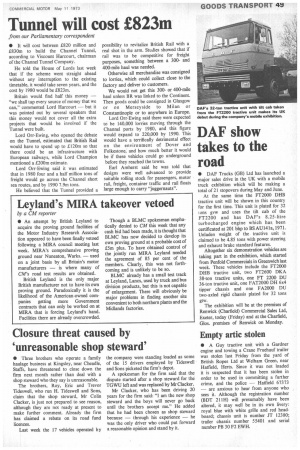Tunnel will cost E823m
Page 51

If you've noticed an error in this article please click here to report it so we can fix it.
from our Parliamentary correspondent • It will cost between £.820 million and £830m to build the Channel Tunnel. according to Viscount Harcourt, chairman of the Channel Tunnel Company.
He told the House of Lords last week that if the scheme went straight ahead without any interruption to the existing timetable, it would take seven years, and the cost by 1980 would be £823m.
Britain would find half this money — "we shall tap every source of money that we can," commented Lord Harcourt — but it was pointed out by several speakers that this money would not cover all the extra projects that would be involved if the Tunnel were built.
Lord Orr-Ewing, who opened the debate on the Tunnel, estimated that British Rail would have to spend up to £120m so that there could be an infrastructure with European railways, while Lord Champion mentioned a .£200m estimate.
Lord Orr Ewing said it was estimated that in 1980 four and a half million tons of freight would go across the Channel short sea routes, and by 1990 7.9m tons.
He believed that the Tunnel provided a possibility to revitalize British Rail with a real shot in the arm. Studies showed that if rail was to be competitive for freight purposes, something between a 300and 400-mile haul was needed.
Otherwise all merchandise was consigned to lorries, which could collect close to the factory and deliver to customers.
We would not get this 300or 400-mile haul unless BR was linked to the Continent. Then goods could be consigned in Glasgow or on Merseyside to Milan or Constantinople or to anywhere in Europe.
Lord Orr-Ewing said there were expected to be 140,000 lorries moving through the Channel ports by 1980, and this figure would expand to 220,000 by 1990. This would have a terrifically detrimental effect on the environment of Dover and Folkestone, and how much better it would be if these vehicles could go underground before they reached the towns.
Earl Amherst said he was told that designs were well advanced to provide suitable rolling stock for passengers. motor rail, freight, container traffic and rail floats large enough to carry "juggernauts".



























































































































































































































